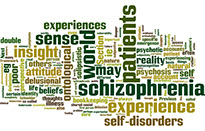Impulsivity and Mental Disorders
Addiction and „bad habits“
In several studies we have investigated the neural correlates of substance and behavioural addictions. In a meta-analytic study we have been able to demonstrate that there are common brain regions involved when seeing the substance one is addicted to, be it seeing alcohol in alcohol-dependent patients, cigarettes in nicotine-dependent participants or cocaine-related pictures in cocaine addicts (Kühn & Gallinat, 2011). We also identified structural and functional neural correlates of frequent internet use (Kühn & Gallinat, 2015) and pornography use (Kühn & Gallinat, 2014).
Most recently we identified structural plasticity processes in subfields of the hippocampus of alcohol-dependend patients over a period of two weeks of abstinence (Kühn et al., 2014). On a longitudinal dataset of adolescents assessed at age 14 and at age 16 years (IMAGEN) we were able to predict increases in alcohol-use related problems with age 16 years from MRI images, namely the gyrification of the orbitofrontal cortex, at age 14 (Kühn et al., 2015).
Schizophrenia

We have conducted several quantitative meta-analyses shedding light on the characteristics of functional brain activation in schizophrenia, one while measuring brain activity at rest (Kühn & Gallinat, 2013), one while measuring the brain during auditory hallucinations, a classical symptom of schizophrenia (Kühn & Gallinat, 2012). Additionally we focused on investigating particular structural abnormalities as e.g. in the cerebellum (Kühn et al., 2012) and in the subfields of the hippocampus (Kühn et al., 2012).
Most recently we conducted a study assessing functional correlates of self-referential processing in MRI and aim at relating this activity to measures of meta-cognitive performance.